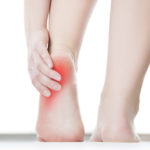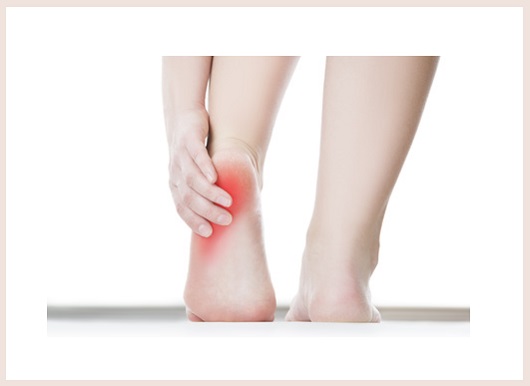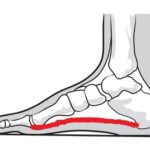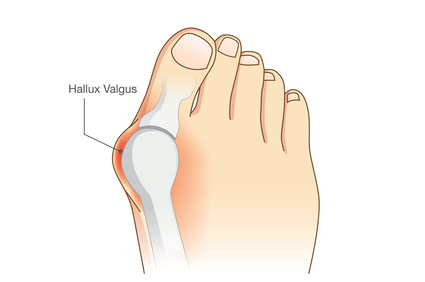Get the Right Diagnosis for Heel Pain
Heel pain is often caused by plantar fasciitis, a condition that is also sometimes called spur syndrome (when a spur is present). Because there are many causes of heel pain, it is important to have a careful diagnosis before any invasive and specific treatments are started. Meeting a podiatrist is the best option, because you will be properly diagnosed and the real cause of the heel pain will be detected.
What is the commonest cause of Heel Pain?
Let’s take a look at the most common cause of consistent heel pain. Plantar Fasciitis This is an inflammation of the band of tissue called plantar fascia. The plantar fascia is the band of tissue that extends from the heel to the toes. When people consistently feel heel pain, it may be the result of the irritation and inflammation of the plantar fasciitis.
What causes plantar fascia inflammation?
The Causes of Heel Pain and one very common cause of this inflammation is faulty structure of the foot. If the person has such a foot the inflammation may start even without walking long distances or being involved in active exercise. People who have problems with their arches are also prone to develop plantar fasciitis. Wearing high heeled footwear on hard and flat surfaces may also trigger plantar fasciitis because unhealthy strain is being put on the plantar fascia. This is why people who do a job that requires wearing high heeled footwear are at higher risk of having the inflammation. Obesity is another contributor to plantar fasciitis. Climbing stairs, ladders, stepping up and down from high motor vehicles and even walking up hills can draw attention to an at risk plantar fascia. Once the inflammatory process has been triggered it tends to be worsened by almost any weight bearing activity
But What Are Some Symptoms That You Have Plantar Fasciitis?
One common symptom is that a person gradually starts experiencing lots of pain on the bottom of the heel, in fact they find it painful standing on their heel. Because the pain can be so severe, the foot tries to adjust and move the body weight to another part of the foot. This compensation often places unusual and unfamiliar pressures on new parts of the foot, generating even further pain.
“I don’t really know when the Painful Heel started
The pain changes at different times of the day”
It is not uncommon for the person to be uncertain how and when and where the original pain started. When someone consistently experiences pain in the foot, a thorough assessment by a podiatrist is important to ensure the accuracy of diagnosis. Determining the real cause of the pains is critical. Some heel pain may not be attributable to plantar fasciitis. If you experience heel pain when you wake up in the morning, then it may be plantar fasciitis. Some may have complained of having pains early in the morning, but after walking for some minutes the pain decreases. This is true because walking may warm-up and ease the fascia. Conversely, some plantar fasciitis sufferers have no pain in the morning, but instead the pain increases as the day, and their weight bearing activities increase. It is possible that the pains will come occasionally, maybe because of the stress of moving and the strains caused by the shoes worn. But if the foot pains continue to grow over time and become persistent, it is more likely that you may have plantar fasciitis.
How You Are Diagnosed
To know the real cause of the heel pain the podiatrist will need to obtain your medical history and examine your foot. The medical history helps him know the medications he can give you, it also gives him an idea of how, when and why the problem started. Throughout the process, the podiatrist takes time to consider the possibility that the pains are caused by factors other than plantar fasciitis. X-rays and other ultrasound imaging may be used to arrive at a diagnosis. An x-ray revealing the presence of a bony heel spur can seem quite alarming. However the bony heel spur may not be the cause of the pain. An ultra sound may show evidence of inflammation in a particular area of the plantar fascia. Thickening of the plantar fascia may also be evident. Diagnosis and subsequent intervention choices may remain blurred.
Treatments at Home for Plantar Fasciitis
The first steps to treating plantar fasciitis start from the home not from the hospital bed and these tips will help you get a faster relief from this pain causing menace.
- Stretch. Try to take part in exercises that stretches out the calf muscles. This will be helpful when you wish to reduce the pains and assist the recovery. Help with stretches
- No barefoot. Try to avoid walking on barefoot. When you walk without shoes, you put undue strain and stress on the plantar fascia.
- Reduce stairs and steps and steep hills
- Use ice. If you put ice on your heels and arch for 20 minute several times a day, you can reduce the inflammation and the pain.
- Heel Cushions or Arch Supports Read More
- Special Cases – If you have diabetes or circulatory deficiencies seek professional advice
These are just few of the things we should know about heel pain. Getting rid of a heel pain isn’t always easy, but following the ideas shared here can fetch you success. Success in getting rid of heel pain also demands you cutting down on your activities and monitoring the type of shoes you use. Get started today






